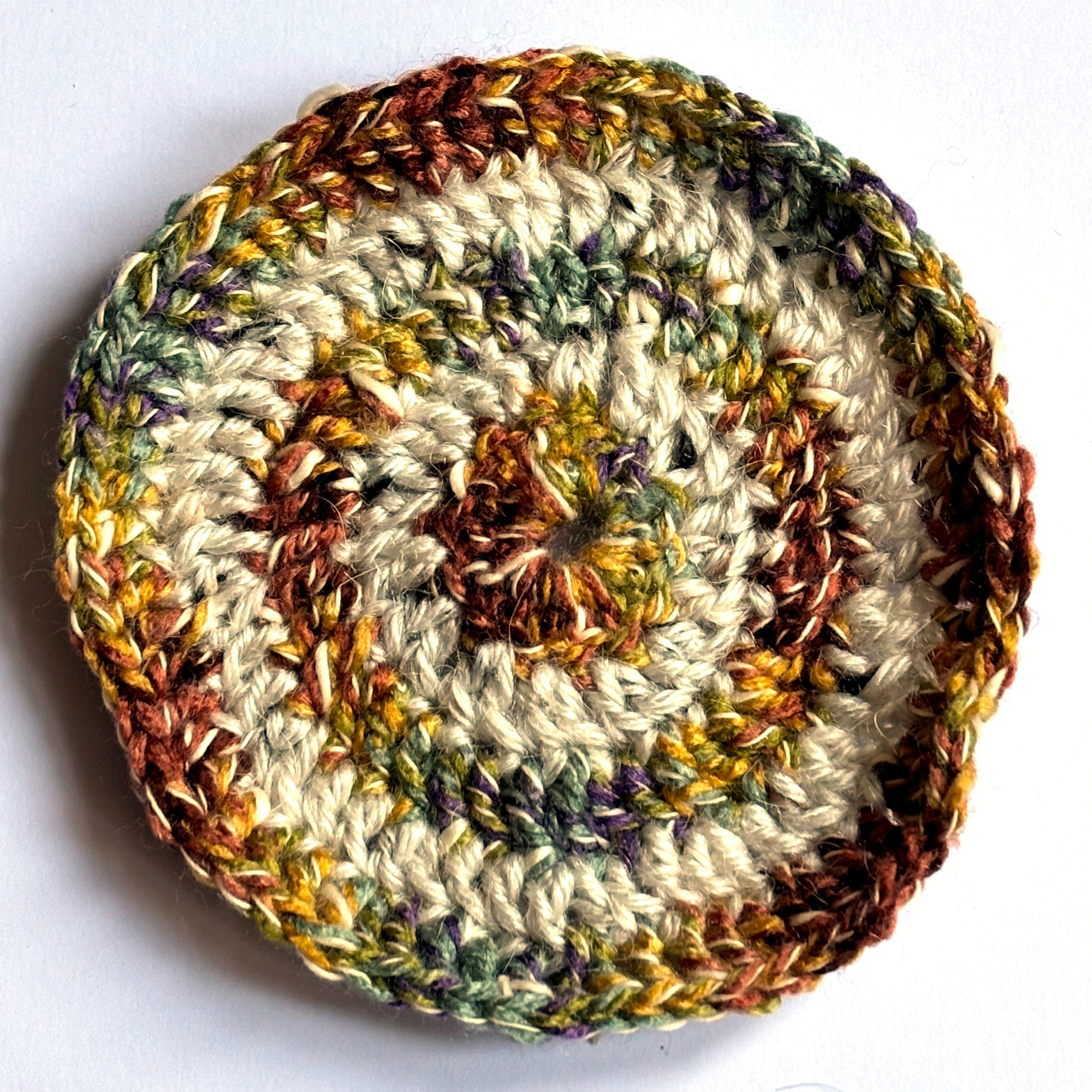Crocheting Flat Circles
Crocheting a flat circle relies on balancing the increasing circumference as you work outward. You achieve a flat circle by evenly distributing increases around the round. The idea is to add a fixed number of extra stitches with each round so that the circle grows smoothly without curving or ruffling.
The patterns below show how a simple formula works with UK trebles, increasing 12 trebles evenly every round. These increases ensure that as the circle expands, the extra stitches compensate for the larger circumference, keeping your work flat.
Adapting the Method for Different Stitches
If you choose a different stitch (e.g., UK doubles or half-trebles), the stitch’s height and density change. Taller or more open stitches might need fewer increases per round to avoid excess flaring, while shorter stitches might require more increases to accommodate the circumference. The key is to adjust the number of increases so the growth in stitch count matches the circle’s expanding edge.

Simple Pattern: Flat Circle with UK Trebles
Materials: - DK Yarn of your choice and 3mm crochet hook
Instructions:
Round 1:
Begin with a magic circle or chain 6 sts and join in a circle.
Work 12 UK trebles into the circle.
Join with a slip stitch to the first treble.
Round 2:
Chain 2 (this counts as your first treble).
In each of the 12 stitches, work 2 UK trebles (an increase in each stitch).
You should now have 24 trebles.
Join with a slip stitch.
Round 3:
Chain 2.
Alternate across the round: work 2 UK trebles in the first stitch (an increase), then 1 UK treble in the next stitch. Repeat this sequence around the circle.
This adds 12 extra trebles, bringing the total to 36.
Join with a slip stitch.
This pattern creates a perfectly flat circle by ensuring that each round expands proportionally. Carry on with round 4 and 5 etc, by evenly increasing 12 trebles around the circle.

When you add extra chain stitches to your circle, you're creating designated spaces where each new crochet stitch will go. This means that instead of working directly into the body of the previous round's stitches, you’re working into these chain spaces. The benefit is that it provides more consistent placement of your increases and can help maintain a uniform spacing, which is crucial for keeping the circle flat.
For example, using UK trebles with extra chains:
Round 1: You work 12 trebles into the center, each into its own chain space.
Round 2: You increase by working 2 trebles in each chain space, bringing the total to 24.
Round 3: You follow the same principle—adding another treble in each chain space to reach 36 trebles.
The extra chain stitches don’t change the basic geometry: you're still adding 12 trebles each round. They simply provide a clear, even framework, making it easier to control the stitch placement, especially in more open or decorative patterns. This method is great for projects where precision and a relaxed working style are key.
